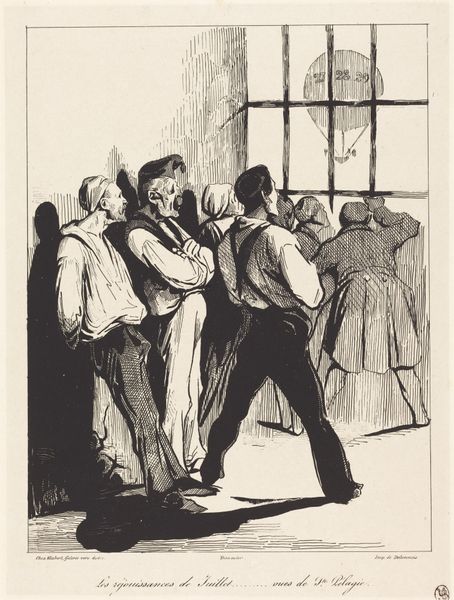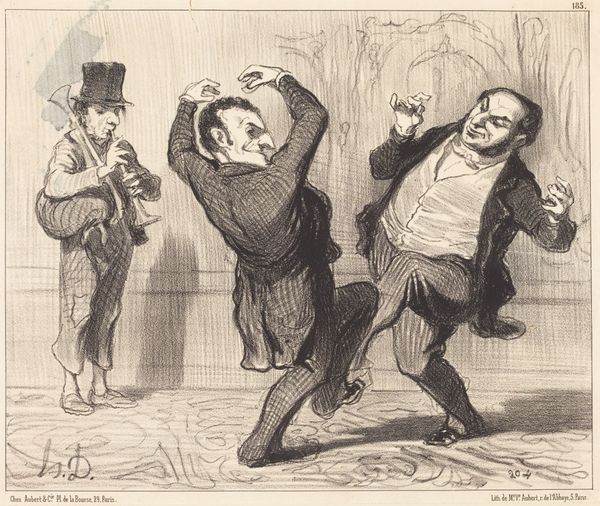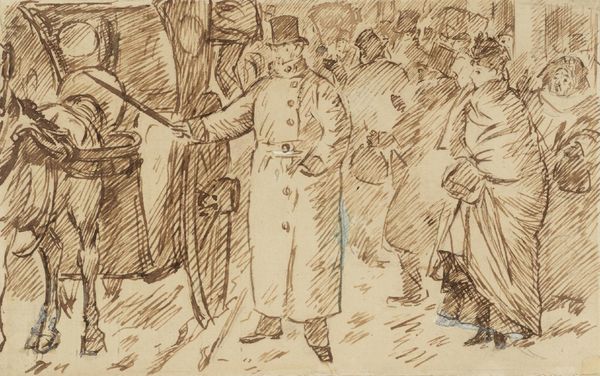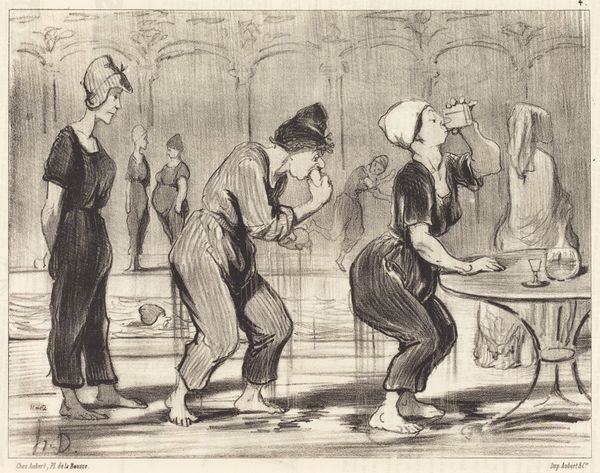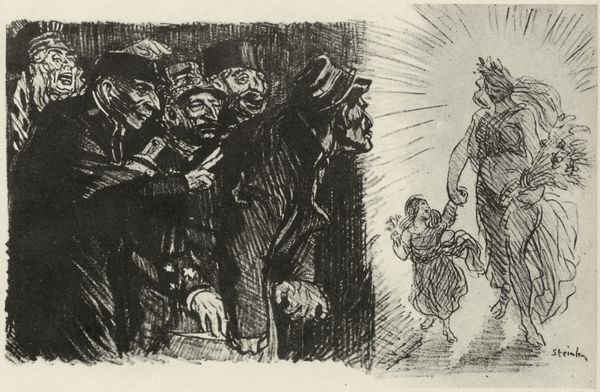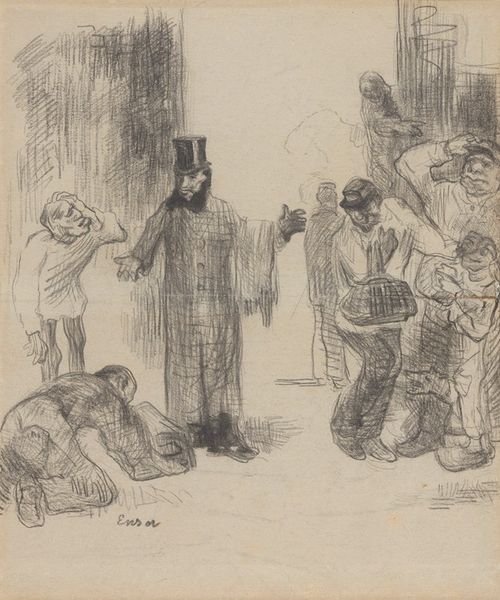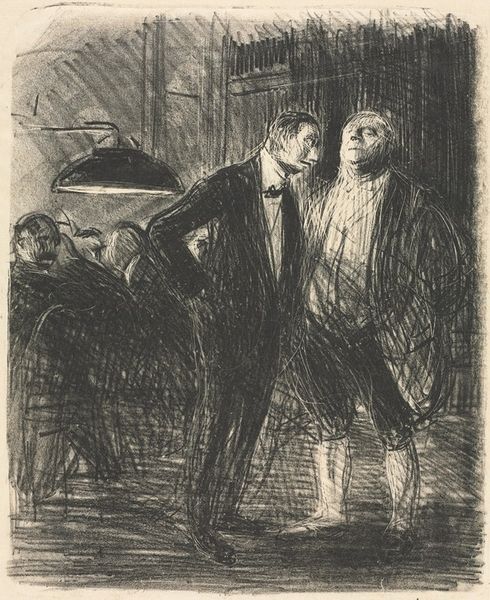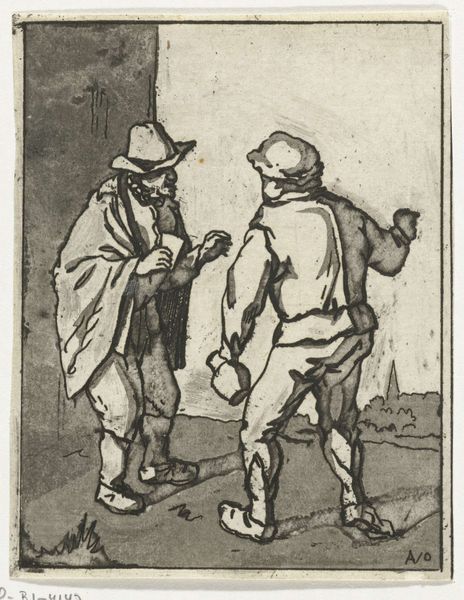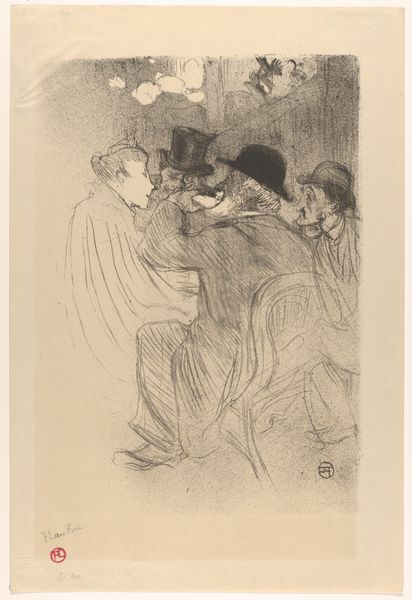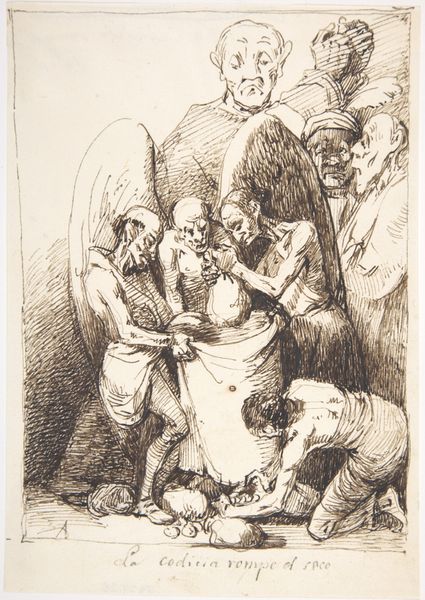
"Happy Thought" (for Punch, December 16, 1876) 1876
0:00
0:00
drawing, print, pencil, pen
#
drawing
# print
#
pen sketch
#
caricature
#
pencil sketch
#
boy
#
figuration
#
pencil
#
men
#
line
#
pen
#
genre-painting
#
history-painting
#
realism
Dimensions: Sheet: 4 7/16 × 7 1/8 in. (11.3 × 18.1 cm)
Copyright: Public Domain
Curator: Charles Keene's "Happy Thought" dates to 1876, originally intended for *Punch* magazine. What catches your eye about this drawing, given its purpose for a popular publication? Editor: Immediately, the visible labor behind the image. You see the furious, almost scribbled lines of the pen and pencil work—very immediate, raw, and less concerned with a polished finish than capturing a specific moment and the grit of everyday life. Curator: That immediacy speaks volumes, especially when considering the social commentary inherent in caricature. The depicted scene is raw, reflecting the realities of urban life and challenging the idealised Victorian image. It served not just to entertain, but to critique the social conditions of the time. Editor: Absolutely. Look at the visible layering of the figures, how they seem compressed together. And how the marks delineate their clothing, emphasizing texture and wear, these materials tell their own stories of labor and class. Curator: And isn’t it interesting that the piece is titled "Happy Thought?" Given the less-than-cheery disposition of the subjects being apprehended by law enforcement during what appears to be an abysmal weather? The contrast feels particularly pointed. Editor: Right. It's not about literal happiness but exposing the social and material realities often hidden from the readers of *Punch*. The material act of drawing itself becomes a means to reveal the underlying structure of society, or to at least question its veneer of order. Curator: Precisely. Keene wields a common pen to challenge the established societal viewpoint, turning something accessible, a magazine illustration, into a subtle act of resistance or critique, one small pen stroke at a time. Editor: Ultimately, it's a fascinating look at how art for mass consumption could simultaneously uphold and subtly challenge dominant ideologies of labor and the realities faced by the lower classes of 19th century Britain. A deceptively simple work with layers of meaning woven into its very materiality. Curator: I agree entirely. The print demonstrates a complicated interplay of public image and subtle commentary. Its apparent simplicity masks its function as both entertainment and nuanced critique of Victorian society's realities.
Comments
No comments
Be the first to comment and join the conversation on the ultimate creative platform.
